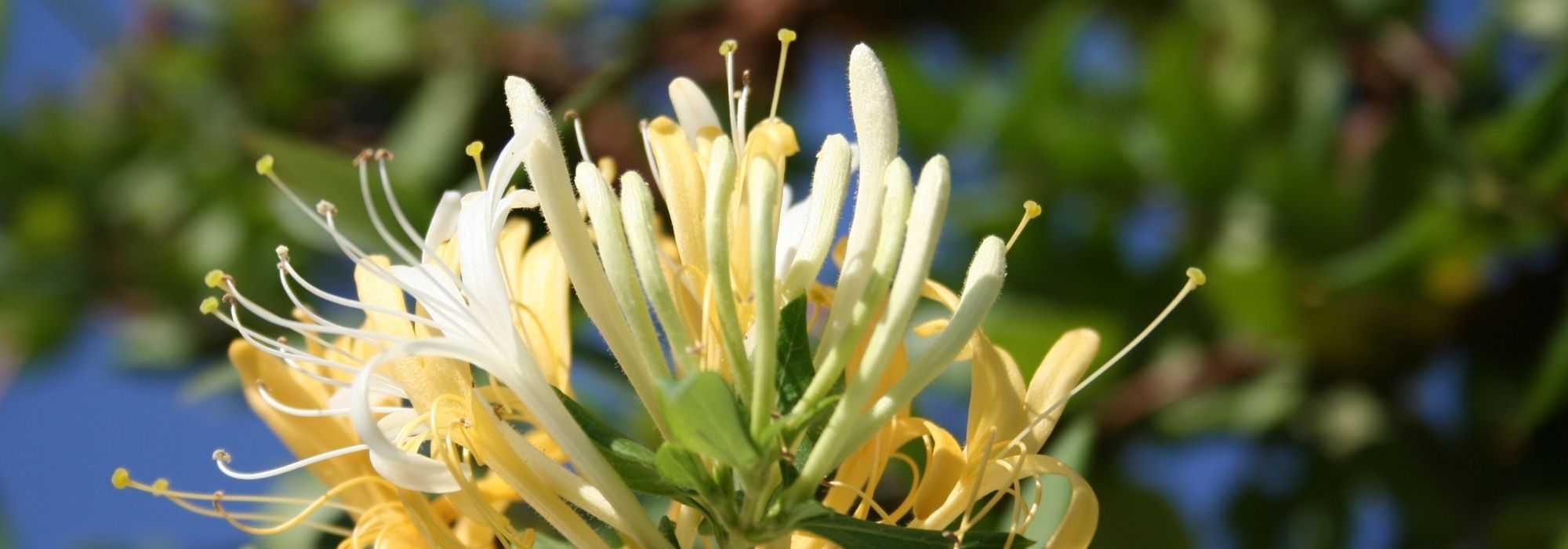
Honeysuckle: the most fragrant!
to scent gardens and terraces
Contents
Honeysuckle is especially known for the beautiful colours of its flowering and its intoxicating fragrance. These flowers combine aesthetics and olfactory pleasure: one can detect floral notes, jasmine, orange, or even honey. Some cultivars are incredibly fragrant. The Wood Honeysuckles (Lonicera periclymenum) are generally among them. The flowers are highly appreciated by pollinating insects, and the red or black berries (inedible for humans) provide a good source of food for birds. An excellent plant to promote biodiversity in the garden!
Here is a selection of 7 varieties of climbing Honeysuckles with powerful and fragrant scents, deciduous or evergreen, large or small in size.
→ Also discover our complete guide on Honeysuckle: planting, pruning, and care
Lonicera periclymenum ‘Belgica Select’
Thanks to the warm hues of its tubular flowers, Woodland Honeysuckle ‘Belgica Select’ draws all eyes in a garden. It derives its uniqueness from its flowering, which changes colour throughout the summer, shifting from cream white to yellow striped with pink-red. It fills the air with its fragrance, blending floral and fruity notes. It is a large climbing honeysuckle, very hardy (down to -15°C), robust and fairly tolerant of pollution. It can quickly reach heights of up to 5 metres with a spread of 3 m. With its glaucous green deciduous foliage, it is perfect for decorating a wall, fence, or pergola in tandem with another climbing plant in lighter, solid colours, such as a Clematis or a climbing Hydrangea (Hydrangea petiolaris). Note that ‘Belgica Select’ can also be grown as a groundcover on a slope.
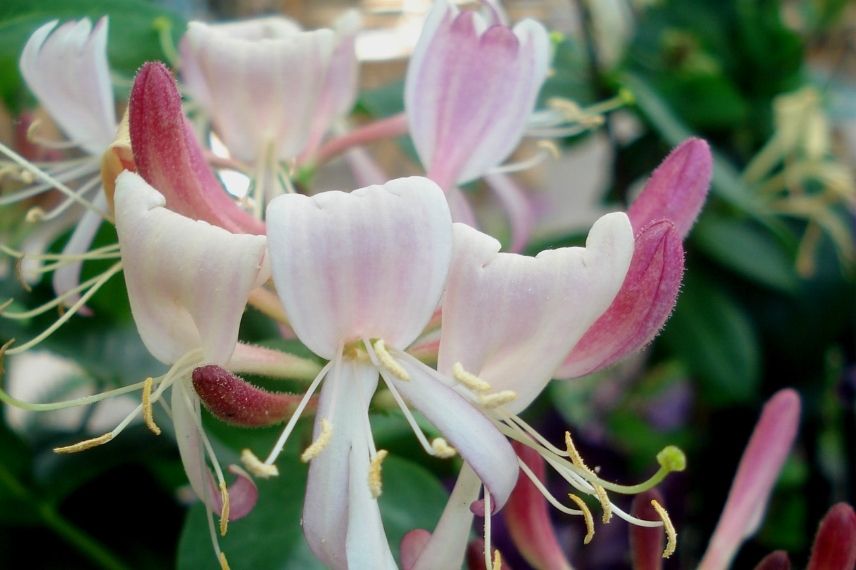
Lonicera periclymenum ‘Belgica Select’
Lonicera periclymenum ‘Serotina’
Another highly fragrant honeysuckle: theLonicera periclymenum ‘Serotina’. These flowers perfectly combine white, pink, and purple. From July to September, it delights us with an intense and pleasant fragrance with sweet notes. Afterwards, these red fruits add a splash of colour to the medium green foliage, which eventually disappears during winter. This deciduous honeysuckle grows up to 5 metres tall and pairs beautifully with summer-flowering bushes, such as a Hibiscus, a Weigela, a crape myrtle, or a variegated Aralia (Aralia elata ‘Golden Umbrella’).
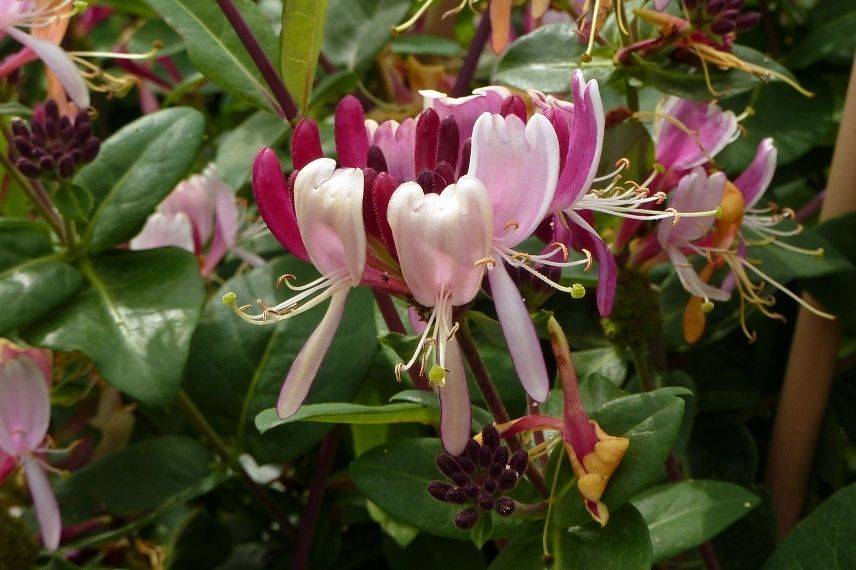
Lonicera periclymenum ‘Serotina’ (photo Javoy Plantes)
Discover other Fragrant climbers
View all →Available in 0 sizes
Available in 1 sizes
Available in 1 sizes
Available in 1 sizes
Available in 1 sizes
Available in 1 sizes
Available in 1 sizes
Available in 1 sizes
Available in 2 sizes
Available in 1 sizes
Lonicera periclymenum ‘Graham Thomas’
The Lonicera periclymenum ‘Graham Thomas’ is characterised by the strength of its floral, fresh, and sweet fragrance. It blooms generously between June and August, producing 3 cm cream-white flowers that turn yellow, gathered in large corymbs. Subsequently, small red berries provide decorative interest during autumn. However, in winter, it will lose its foliage. This climbing Honeysuckle grows up to 4 metres tall and can be cultivated on a support to enhance the façade of a house or dress up a fence. To ensure it grows in the best conditions, plant it in a semi-shaded spot alongside other summer climbers, such as Shizophragma or Pileostegia viburnoides.
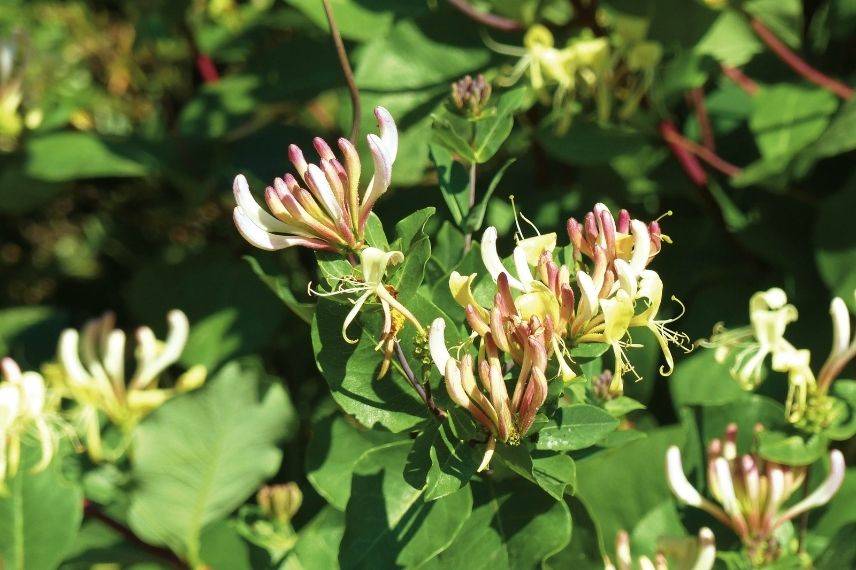
Lonicera periclymenum ‘Graham Thomas’
Read also
How to grow Honeysuckle in a pot?Lonicera periclymenum 'Scentsation'
The Lonicera periclymenum ‘Scentsation’ is one of the best scented Honeysuckles. Named ‘Climbing Plant of the Year 2016’ at the Montreal Horticultural Rendezvous, it is renowned for its compact habit, generous flowering, and the exceptional fragrance of its flowers. This recent cultivar of Wood Honeysuckle produces small, highly fragrant tubular flowers, white and yellow in colour, grouped in clusters from June to September. Small red berries, highly appreciated by birds, follow the flowering. This cultivar, resistant to temperatures below -15°C, is of medium size and does not exceed 3 metres in height when mature. Plant it in full sun or partial shade, close to a path or door, to enjoy its pleasant fragrance throughout the summer season. Pair it with an climbing rose in similar tones, either solid or bi-coloured, such as the Rosa multiflora ‘Ghislaine de Féligonde’, whose light fragrance will not overpower. Indeed, the combination of highly fragrant plants can sometimes be a poor idea.

Lonicera periclymenum ‘Scentsation’
Lonicera heckrotii ‘Gold Flame’
The Lonicera heckrotii ‘Gold Flame’ boasts a multicoloured flowering that has captivated many. Its 5 cm tubular flowers, tinged with bright pink, open to reveal two yellow-orange lips. A sparkling mix of colour for summer! For this plant, the fragrance is floral, enhanced by a spicy touch. Just like the Wood Honeysuckle ‘Scentsation’, it is also modest in size and spreads little (3 m high and 1 m wide at maturity). Note that in spring, as this deciduous climber resumes growth, the young shoots and leaves are reddish, adding to its charm. Furthermore, it can easily be grown and trained as a bush in a border. Due to its size, the ‘Gold Flame’ Honeysuckle is suitable for small spaces. It is a good solution for adding colour to walls and green supports that have insignificant and less decorative flowering in summer (Ivy, Virginia Creeper).

Lonicera heckrotii ‘Gold Flame’
Lonicera japonica 'Halliana'
The Lonicera japonica ‘Halliana’ stands out for its vigour, powerful fragrance, and long flowering period. This is a very large climbing Honeysuckle (5 to 10 m in height), easy to grow, but it can be a bit shy. Pruning at the end of autumn may be necessary to contain it. This Japanese Honeysuckle is rather recommended for large spaces. From June to October, it reveals flowers about 4 cm in size, initially white, then gradually turning to cream yellow. Strongly scented, they are perfect for creating bouquets to fragrance the home. After flowering, the fruits take over: bluish-black berries. To encourage even more flowering, find it a sunny spot. Take advantage of its robustness to cover a large bank, growing it alongside groundcover plants such as St John’s Wort (Hypericum calycinum) and the shrubby Honeysuckle Lonicera pileata.
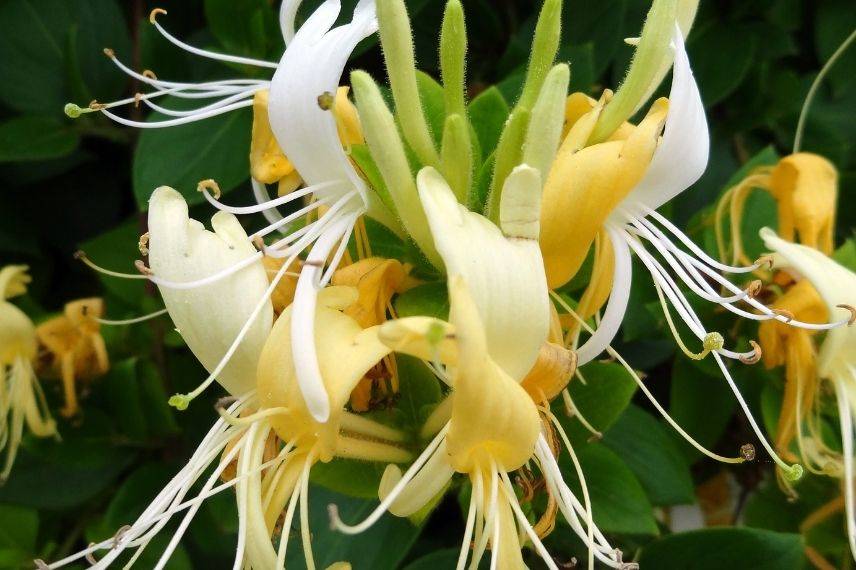
Lonicera japonica ‘Halliana’
Lonicera japonica ‘Hall’s Prolific’
The name of this English cultivar obtained in 1980 gives an idea of the growth of this climbing plant. The Lonicera japonica ‘Hall’s Prolific’ is considered one of the best climbing honeysuckles. It indeed has many advantages. Very hardy and strong, it withstands very low temperatures (down to -15°C). It delights us with a long flowering period from June-July to September, particularly fragrant. The scent of its flowers evolves throughout the season. Initially, a pleasant aroma of lily of the valley and jasmine is released, followed by a fragrance of oregano that emerges at the end of summer. These white flowers, gradually turning pale yellow, bring joy to pollinating insects. Later, it is these black berries that delight the birds. Evergreen in climates with mild winters, this Japanese honeysuckle is very decorative in partial shade. Thanks to its rapid growth, it can reach heights of 6 m and spread up to 3 m wide. Pair it with a tree that provides shade at its base: Magnolia, Judah tree, mountain ash, black locust.

Lonicera japonica ‘Hall’s Prolific’
- Subscribe!
- Contents
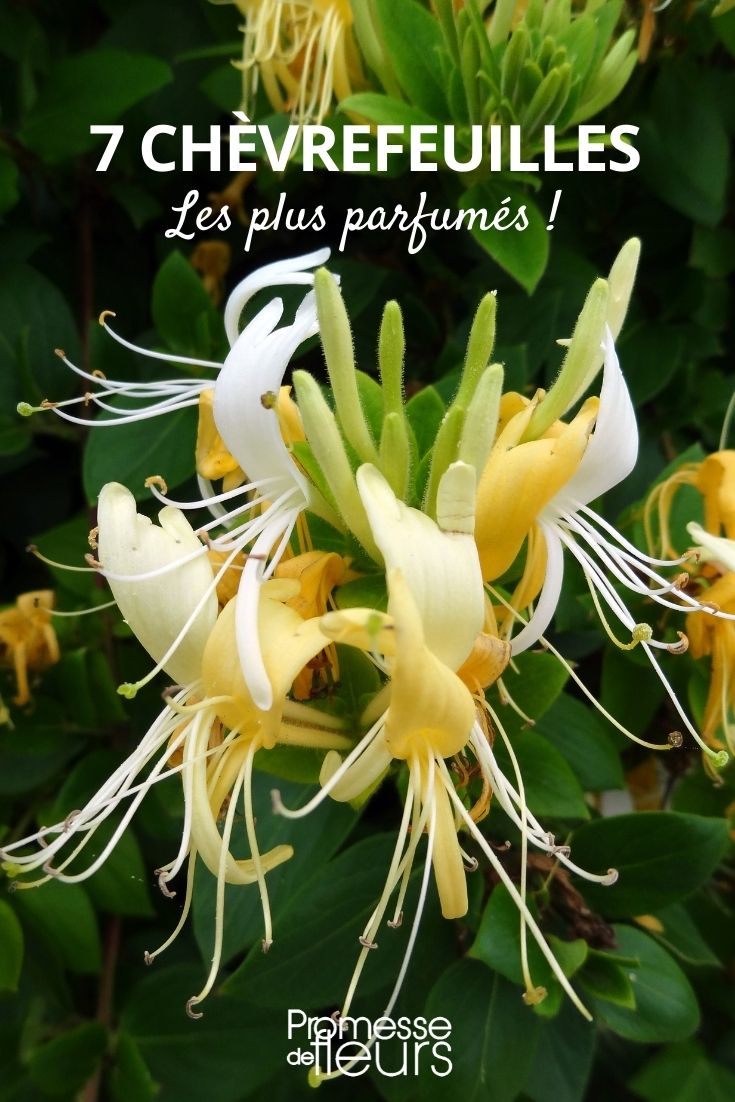
































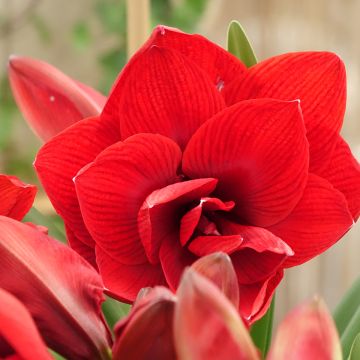



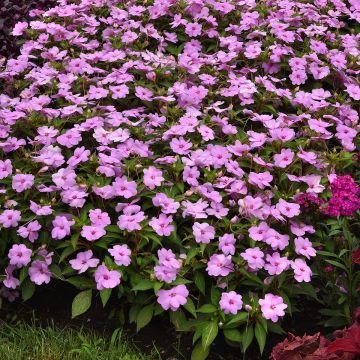
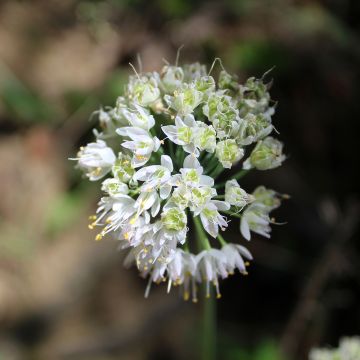
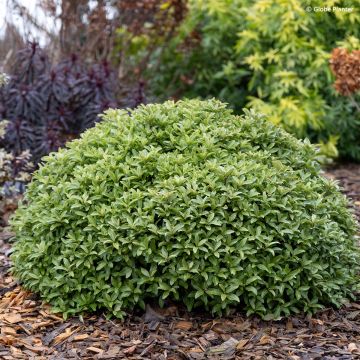
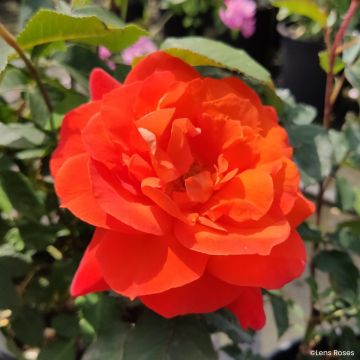

Comments